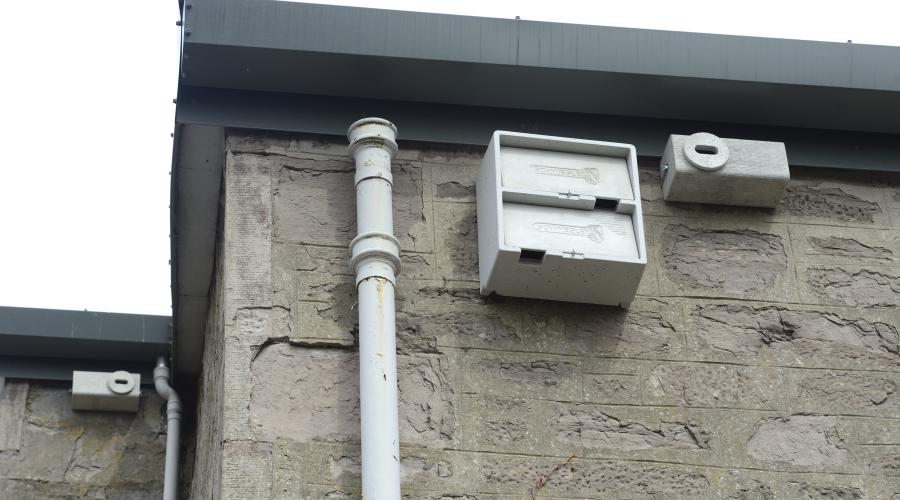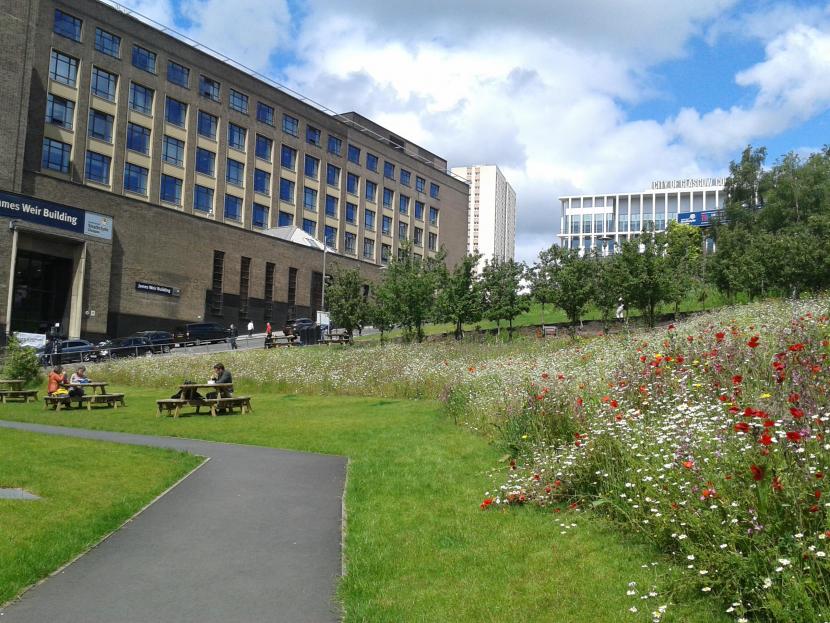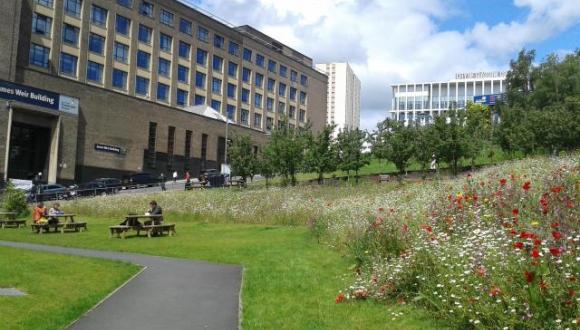
Buildings and biodiversity
Find out how to make space for nature in the built environment by combining building maintenance with enhancing biodiversity.
There are a number of ways you can increase the value of your property by making space for nature and biodiversity when building new developments and maintaining your buildings and grounds.
Maintaining buildings while protecting biodiversity
When maintaining existing buildings and infrastructure, take care to ensure that biodiversity will not be adversely affected. For example, you should check for signs of bats using buildings, otters using watercourses and nesting birds in trees.
For guidance, read Buildings, Highways and Infrastructure Maintenance.
Schools, colleges and universities
If you manage school builds, refurbishments or existing school grounds, even small changes can help improve biodiversity and increase the learning potential of your setting. Many educational establishments are now working to encourage wildlife by adding to the variety of natural environments on their campuses.
Use these guides to help implement biodiversity projects in schools and on further education and university campuses:
- How to Enhance Biodiversity in School Grounds
- Biodiversity on Campus
- Outdoor Learning Directory (search ‘biodiversity’ for news, resources and training opportunities)
- Campaign for School Gardening
- Eco-Schools

Robert Douglas Memorial Primary School publics taking their lessons out into their natural environment.
Town centres and housing
Most towns and cities have parks, gardens and allotments and other public urban greenspace, known as green infrastructure. This makes our day-to-day environment more attractive, more comfortable in the event of heat, strong wind and rain, and provides habitats for biodiversity.
For guidance on how to design and plan developments in our town centres keeping green infrastructure in mind see:
- An action plan to improve open spaces in social housing areas
- A guide for community groups working to improve public space
- GCV Green Network
- Creating Sustainable Places
- New Housing, Settlement Expansion and the Natural Heritage
- IUCN - A guide for pollinator-friendly cities

A good example of mown strip and wildflower meadow at Strathclyde University, Glasgow
Hospitals and health centres
There is a significant interaction between well-being, health promotion and biodiversity. The benefits of biodiversity are not only environmental but also aesthetic, spiritual, cultural and recreational.
Visit our contributing to a healthier Scotland pages for more on the benefits of nature to physical and mental health, and Our Nature Health Service pages for more on how to integrate nature into hospital and nursing home settings.
The following resources can help you to manage biodiversity in a healthcare setting and utilise the benefits nature provide for health and wellbeing:
- Our Hospital and health centre case studies share examples of landscape changes
- Promoting land management in the NHS to support local biodiversity
- The green agenda for mental health
- Therapeutic Garden Design
- Walking for Health
- Green Gym

Part of the Green Exercise Partnership which is a joint venture between Scottish Forestry, NatureScot and NHS Scotland
Grounds and habitat management
Grounds can include anything from office car parks, planters and gardens to municipal parks and golf courses. There are plenty of opportunities to make space for nature during your maintenance and management activities to benefit biodiversity and people.
Managing specific habitats and species
- Discover the habitat types that are included on the Scottish Biodiversity List.
- Download descriptions of the priority habitats and how to manage them.
- This table of commonly encountered species and their habitats highlights the species you are likely to encounter and in which habitats. It is not comprehensive, but it identifies those species for which specific action may be required.
- Find out more about working with particular species, safeguarding protected species and guidance for planners and developers on protected animals.
The following resources provide advice on how to manage your grounds;
- Enhancing biodiversity in your grounds
- Helping Scotland's Pollinators resources
- Grassland Cutting and Enhancement
- Urban Habitats
- Urban plants







